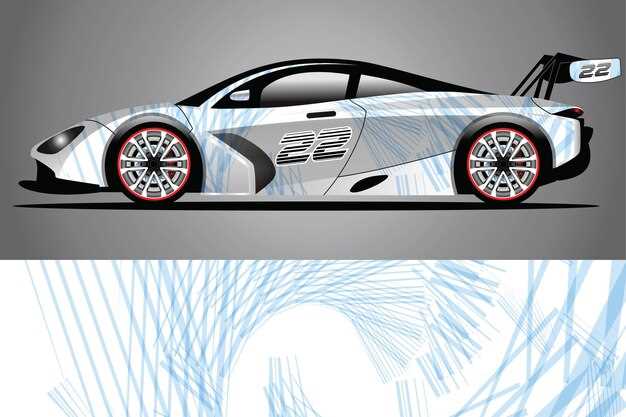
The design of modern sports cars is guided by a set of principles that prioritize performance, aesthetics, and technological advancement. These principles not only define the exterior and interior of the car but also influence the engineering and materials used throughout. As competition intensifies within the automotive industry, manufacturers continually reassess their design philosophy to create vehicles that capture the essence of speed and agility while ensuring safety and comfort.
At the core of these principles lies a commitment to innovation. This encompasses not only the integration of advanced materials, such as lightweight carbon fiber and aluminum, but also the incorporation of cutting-edge technology. Innovations in aerodynamics, engine performance, and hybrid or electric powertrains are reshaping the landscape of sports car design. By marrying these elements, designers strive to enhance the driving experience, pushing the boundaries of what a car can achieve.
Moreover, aesthetics play a pivotal role in attracting buyers and establishing brand identity. The sculpted lines, aggressive stances, and carefully crafted details of a sports car must resonate with enthusiasts and casual drivers alike. Balancing visual appeal with functional performance is a delicate dance that modern designers must master to remain relevant in an ever-evolving market.
Aerodynamics and Performance Optimization Techniques
Aerodynamics plays a crucial role in modern sports car design, directly influencing performance and efficiency. The principles of aerodynamics focus on how air interacts with the vehicle’s surface when in motion. Low drag and high downforce are essential for achieving optimal speed and stability. Every curve and contour on a modern sports car is meticulously crafted to enhance airflow, reducing resistance and improving overall performance.
One of the key techniques used in aerodynamics is the implementation of active aerodynamics systems. These systems adjust the car’s aerodynamic elements, such as spoilers and wings, in real-time based on speed and driving conditions. By optimizing the angle and position of these components, engineers can maximize downforce at high speeds while minimizing drag at lower speeds.
The shape of a sports car significantly affects its aerodynamic efficiency. A sleek, elongated body reduces turbulent airflow and enhances performance. Computational fluid dynamics (CFD) simulations are increasingly employed during the design phase to predict airflow patterns. This data allows designers to refine the shape of the car iteratively, ensuring that performance goals are met before physical prototypes are built.
Additionally, the use of lightweight materials contributes to performance optimization. Reducing a car’s weight not only enhances acceleration but also allows for better handling and braking. When combined with aerodynamic improvements, these lightweight materials create a synergy that elevates a sports car’s performance to new heights.
An effective cooling system is also crucial, as high-performance engines generate significant heat. Proper airflow management ensures that necessary components maintain optimal operating temperatures without adversely affecting aerodynamics. This involves strategic placement of vents and intakes that complement the overall aerodynamic profile while maintaining functionality.
In summary, understanding the principles of aerodynamics is essential for modern sports car design. Employing innovative performance optimization techniques enhances both speed and stability, resulting in vehicles that not only look aesthetically pleasing but also deliver unmatched driving experiences.
Materials and Manufacturing Innovations in Sports Cars

Modern sports car design heavily relies on advancements in materials and manufacturing processes to enhance performance, safety, and aesthetics. One of the key innovations is the use of lightweight materials such as carbon fiber, aluminum alloys, and advanced composites. These materials significantly reduce the overall weight of the car, resulting in improved acceleration, handling, and fuel efficiency.
Carbon fiber, in particular, has revolutionized sports car manufacturing due to its high strength-to-weight ratio. It allows designers to create intricate shapes that contribute to aerodynamic efficiency while maintaining structural integrity. This innovation is evident in various components, such as body panels, chassis, and even wheels, offering enhanced performance without compromising safety.
Aluminum alloys are also critical in modern sports car design, providing a good balance between weight and strength. Manufacturers utilize advanced techniques like hydroforming and extrusion to produce complex parts with minimal waste. This not only streamlines the manufacturing process but also supports sustainable practices by reducing environmental impact.
Furthermore, additive manufacturing, or 3D printing, has transformed the production of sports car components. This technology allows for rapid prototyping and customization, enabling designers to experiment with new forms and structures without the constraints of traditional manufacturing. 3D printing facilitates the production of lightweight, complex geometries that can enhance the performance and design of the vehicle.
The integration of smart materials and sensors into sports car design is another notable innovation. These materials can respond to changes in environment or stress, adjusting their properties to enhance performance. For instance, active suspension systems can modify stiffness based on driving conditions, providing a superior driving experience.
In summary, the continuous evolution of materials and manufacturing technologies plays a pivotal role in shaping the future of sports cars. These innovations not only enhance performance and design but also contribute to sustainability and safety, making them essential in the competitive automotive landscape.
Integration of Advanced Technology for Enhanced Driving Experience

The design of modern sports cars emphasizes the seamless integration of advanced technology to elevate the overall driving experience. Key principles of this integration focus on improving performance, safety, and driver engagement. Innovative systems such as adaptive cruise control, advanced driver-assistance systems (ADAS), and real-time data analytics contribute significantly to this objective.
Performance optimization is achieved through technologies like lightweight materials, aerodynamic enhancements, and dynamic torque vectoring. These features not only enhance handling but also increase fuel efficiency. Additionally, powertrain innovations, including hybrid and fully electric systems, provide instantaneous torque delivery, improving acceleration and responsiveness.
Safety is a paramount aspect of modern sports car design. The incorporation of advanced sensors and cameras allows for features such as lane-keeping assistance and collision avoidance. These systems rely on real-time data processing, offering a safer driving experience while allowing drivers to maintain confidence in their vehicle’s capabilities.
Driver engagement is further enhanced through infotainment systems that feature voice recognition, touchscreen interfaces, and connectivity options. These technologies enable drivers to interact with their vehicles in a more intuitive manner, allowing for personalized settings and real-time monitoring of vehicle performance. Additionally, augmented reality displays can provide essential information while minimizing distractions.
Overall, the principles of modern sports car design leverage advanced technology to create an exhilarating, safe, and connected driving experience. As these innovations continue to evolve, they redefine expectations and set new benchmarks in the automotive industry.



